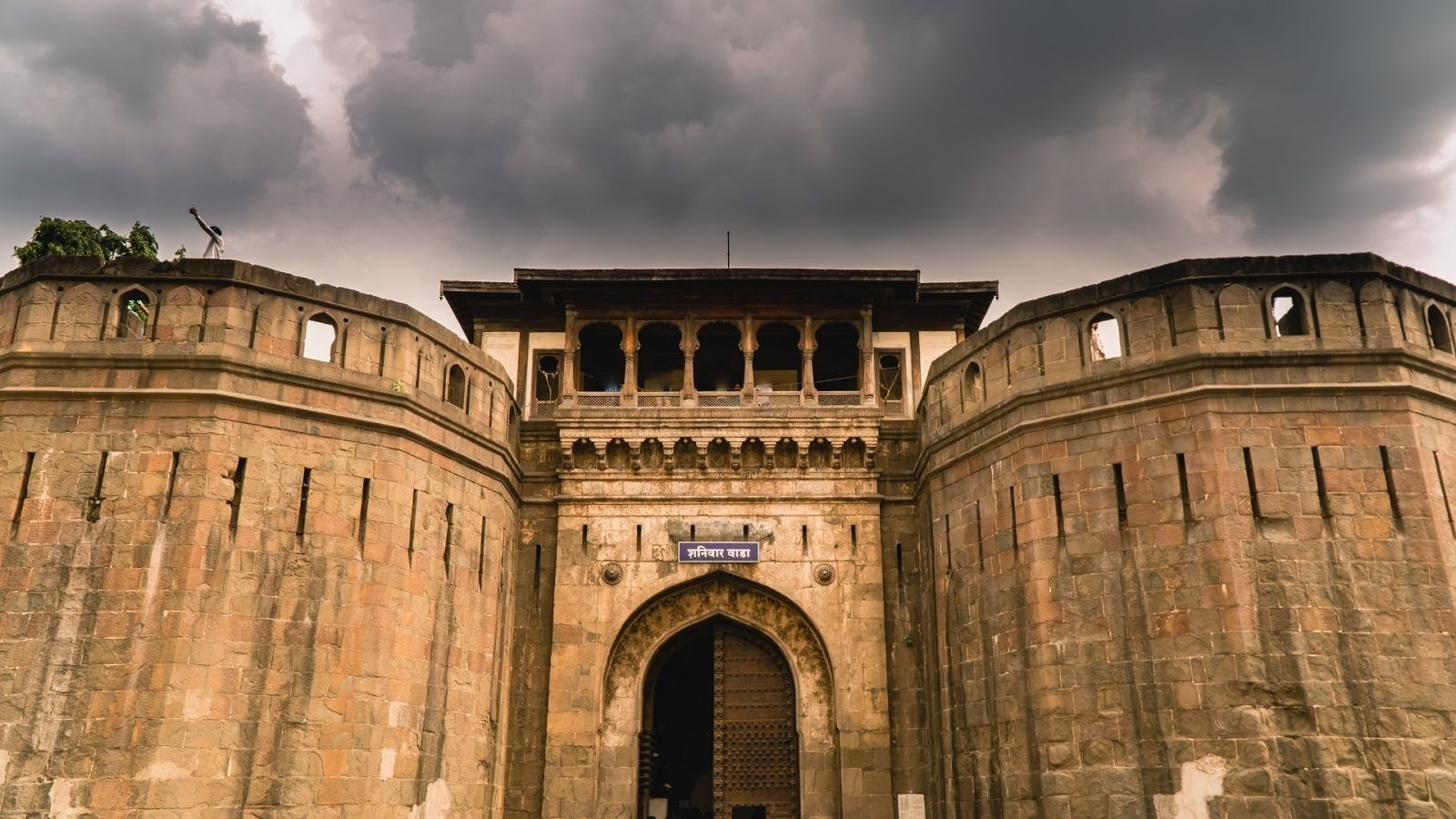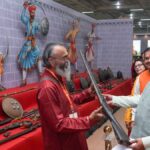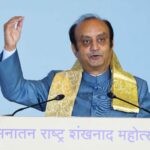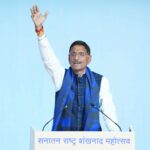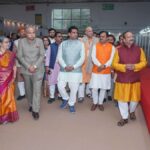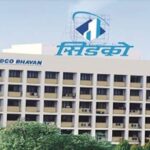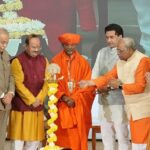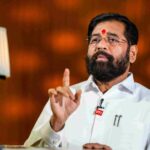“The Dark History of Shaniwar Wada: The Truth Behind ‘Kaka Mala Vachva’”
When someone from outside visits Pune, the first thing they do is eat misal (a spicy local dish) and praise how amazing it tastes here. Then they visit Dagdusheth Halwai Ganpati to seek blessings from Lord Ganesha. From there, they usually go see Lal Mahal and finally head toward Shaniwar Wada.
While visiting Shaniwar Wada, it’s common for someone to ask, “Is it true that people hear a voice from here saying ‘Kaka Mala Vachva’ (Uncle, save me)?”
Does that voice really exist?
The rich history of Shaniwar Wada, its political importance in Indian history, its grand architecture—all of it often gets sidelined for this one question:
“Kaka, save me”—is that voice real?
Currently, Shaniwar Wada is in the news not because of that mysterious voice, but because of a different reason: the Adopt a Heritage scheme by the central Archaeological Department, which allows private organizations to adopt heritage sites for their maintenance and management.
In Pune district, this includes five heritage sites:
-
Shaniwar Wada
-
Aga Khan Palace
-
Pataleshwar Caves
-
Lohagad Fort
-
Karla-Bhaje Caves
However, some organizations have opposed the adoption of Shaniwar Wada and even threatened to take the matter to court.
And in this heated atmosphere, the old story of the “Kaka Mala Vachva” voice has resurfaced.
Many people have discussed it, but no one has ever confidently said they’ve heard the voice themselves.
So why does this story still keep coming up?
What really happened inside Shaniwar Wada?
Who was this “Kaka”?
And what’s the real story behind “Kaka, save me”?
Let’s dive in.
The History Behind the Legend:
On November 18, 1772, Madhavrao Peshwa died young due to tuberculosis.
This left the Peshwa seat vacant.
His brother Raghunathrao (Raghoba Dada) wanted to become the next Peshwa.
However, the position was given to Madhavrao’s much younger brother, Narayanrao Peshwa, who was just 17 years old at the time.
Narayanrao had a short temper, lacked political experience, and had spent most of his childhood away from Shaniwar Wada.
Therefore, it was decided that his uncle Raghunathrao would help him with state affairs.
But that didn’t happen.
Narayanrao began making decisions on his own, imitating Madhavrao’s leadership style.
His immaturity led to tensions with his court officers, and he even had Raghunathrao placed under house arrest due to growing distrust.
This angered Raghunathrao, who felt cheated out of power.
Many disgruntled courtiers who disliked Narayanrao supported Raghunathrao secretly.
Their silent struggle intensified, and it was becoming increasingly evident across the Peshwa court.
Raghunathrao, furious and confined, decided the only way forward was to:
-
Escape from captivity
-
Capture Narayanrao
-
Seize the Peshwa throne himself
The Deadly Conspiracy:
It’s said that Raghunathrao once tried to escape but was stopped by Nana Phadnavis, a powerful minister.
Raghunathrao was then more tightly confined and even restricted from visiting the temple.
Meanwhile, tensions within the court grew.
-
The Kayastha Prabhu community was upset over caste disputes.
-
Soldiers (Gardis) were unpaid and angry.
-
Old ministers were unhappy with Nana Phadnavis’ growing power.
Raghunathrao took advantage of all this.
As Ganesh Chaturthi 1773 approached, his confinement was relaxed.
He met with courtiers and conspired with a servant named Tulaji Pawar, who approached the leaders of the Gardi soldiers, Sumersingh, Kharkasingh, and Mohammad Yusuf.
Tulaji promised that if they captured Narayanrao, Raghunathrao would become Peshwa and ensure everyone got their salaries.
Sumersingh hesitated, fearing Nana Phadnavis’ wrath if the plan failed.
So Raghunathrao had Tulaji offer three lakh rupees and land grants to win him over.
Sumersingh finally agreed but demanded a written order stating “Narayanrao should be captured.”
August 30, 1773 – The Assassination:
According to records like Govind Sakharam Sardesai’s Marathi Riyasat, on this day, Raghoji Bhosale from Nagpur had visited to meet Narayanrao.
During their meeting, Bhosale warned Narayanrao about a rumored plot to remove him from power.
Narayanrao was alarmed and returned to Shaniwar Wada, where he shared the information with Haripant Phadke.
Tulaji Pawar, realizing the plot might be discovered, hurried to execute the plan.
Soon after, about 700 Gardi soldiers arrived at the gates of Shaniwar Wada.
They killed the guards and stormed inside toward Narayanrao’s chambers.
Narayanrao, terrified, ran from room to room—first to his aunt Anandibai’s chamber, then toward his uncle Raghunathrao’s.
He clung to Raghunathrao, begging,
“Uncle, save me. You can rule the state, imprison me if you want, but please save me!”
Raghunathrao’s plan was working.
But at that moment, Sumersingh entered and threatened to kill both of them if Raghunathrao interfered.
Sumersingh believed that capturing Narayanrao wasn’t enough—he had to be killed, or he would return to seek vengeance.
Tulaji Pawar separated them.
Narayanrao ran for his life, while some loyal servants tried to defend him.
But all of them—including Narayanrao Peshwa—were murdered by the Gardis.
Aftermath:
This was an 18-year-old Peshwa, betrayed and killed due to internal political rivalry, orchestrated by his own uncle.
It’s said that Anandibai, Raghunathrao’s wife, changed the words in the order from “hold” (dharaave) to “kill” (maaraave)—leading to Narayanrao’s murder.
Though this is disputed, with some claiming such a change isn’t possible in Modi script, the story persists.
The gate through which Narayanrao’s body was carried out is now called the Narayan Gate.
The Legend of the Voice:
Since then, tales of “Kaka, Mala Vachva” (Uncle, save me) being heard at Shaniwar Wada have spread.
Some say it happens on full moon and new moon nights.
But no one has ever actually heard the voice.
Not morning walkers in Jijamata Garden nearby, not elderly visitors to the Peshwe Ganpati Temple.
Many curious explorers have tried to record the voice from Shaniwar Wada’s towers.
Nothing was ever captured.
Due to such mischief, the government banned public access to the upper parts of Shaniwar Wada in the evenings—fueling even more rumors.
So where did the story start?
There is no written record of the voice from that time.
Historians believe it’s an urban legend that emerged due to:
-
The brutality of the incident
-
The shocking nature of a Peshwa being killed in his own residence
-
The fact that Shaniwar Wada later became deserted
-
Rumors that Bajirao II avoided staying there because of the murder
-
Use of the fort as a police station and asylum under British rule
All these elements added to the eerie atmosphere, making it fertile ground for ghost stories.
And so, the chilling phrase “Kaka, Mala Vachva” continues to echo—not literally, but through time and imagination.
